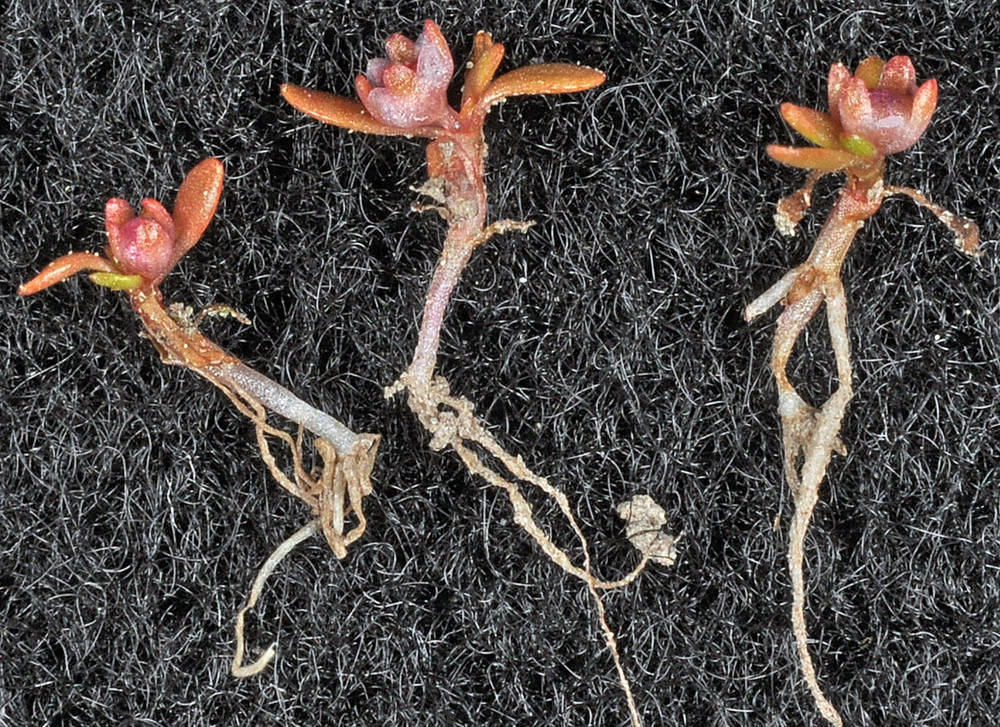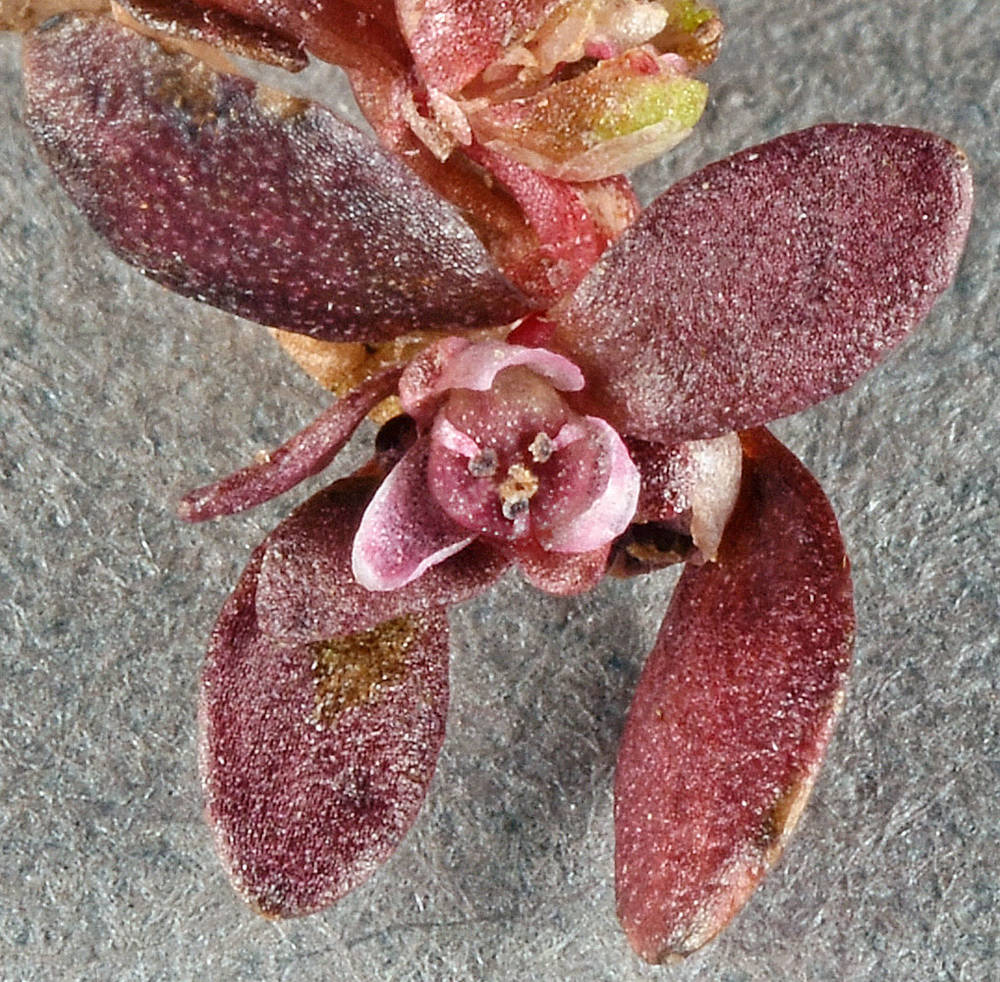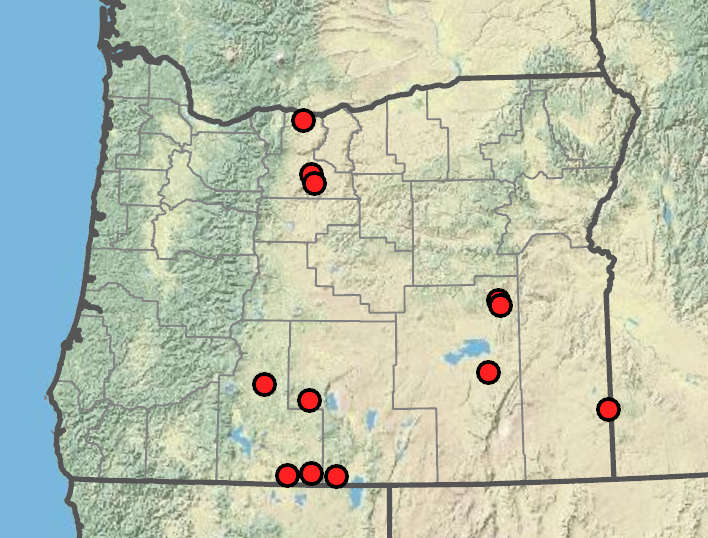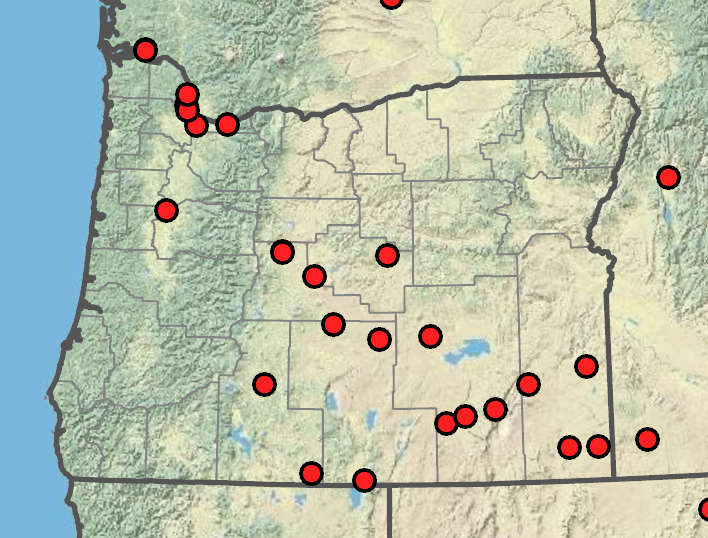Elatine californica
Elatine chilensis
California waterwort
Chilean waterwort
light green to green (reddish green);
internodes 2–12 mm.
green to reddish green;
internodes 2–7 mm.
blades spatulate or elliptic, 3–12 mm;
petioles 0.5–6 mm.
blades oblong to oblanceolate, 2–6 mm;
petioles 0.4–1.2 mm.
peduncles recurved, usually > 1.5 mm.
peduncles straight; < 1.5 mm.
(0.1)1.5–4 mm;
sepals 4, sometimes 1 smaller;
petals 4;
stamens 8;
carpels 4.
0.1–0.5 mm;
sepals 3, sometimes 1 smaller;
petals 3;
stamens 3;
carpels 3.
disk-shaped to compressed globose, 4-locular.
compressed globose to globose, 3-locular.
16–24, highly curved to nearly circular, 0.5–0.7 mm;
surface pits 20–27 per row; length 1.2–2 × their width.
18–36, slightly curved to nearly straight; ~0.5 mm;
surface pits 16–25 per row; length 3–5 × their width.
Elatine californica
Elatine chilensis
In or near puddles, ponds, reservoirs, lakes, and marshes. Flowering Mar–Aug. 50–1600 m. Col, ECas. CA, ID, NV, WA; northeast to MT, southeast to NM, south to Mexico. Native.
Elatine californica can be distinguished from all other Elatine species in the Unites States by its four-merous flower parts and nearly circular seeds. Both morphological and molecular analyses (Razifard et al. 2017) support a close affinity between E. californica and E. hydropiper, which occurs in Central Asia, Europe, and North Africa.
Emergent form on mudflats near lakes and reservoirs, submersed form in shallow lake waters. Flowering Apr–Sep. 0–2600 m. BR, ECas, Lava, WV. CA, NV, WA; western North America; South America. Native.
Elatine chilensis has an amphitropical disjunction in its distribution between southern South America and western North America. The exact cause of disjunction remains unclear, although birds might be responsible for dispersing the minute seeds of this species between the two regions (Carlquist 1983).
Hamid Razifard, Gordon Tucker, Donald Les
Hamid Razifard, Gordon Tucker, Donald Les
- Local floras:
CA,
OR,
WA
- Local Web sites:
CalFlora,
CalPhotos,
Flora NW,
PNW Herbaria
WildflowerSearch
iNaturalist (observations)
USDA Plants Database
- LBJ Wildflower Center
- SEINet
- Plants of the World Online
- Encyclopedia of Life
- Wikipedia
- Google Image Search
- Local floras:
CA,
OR,
WA
- Local Web sites:
CalFlora,
CalPhotos,
Flora NW,
PNW Herbaria
WildflowerSearch
iNaturalist (observations)
USDA Plants Database
- LBJ Wildflower Center
- SEINet
- Plants of the World Online
- Encyclopedia of Life
- Wikipedia
- Google Image Search





